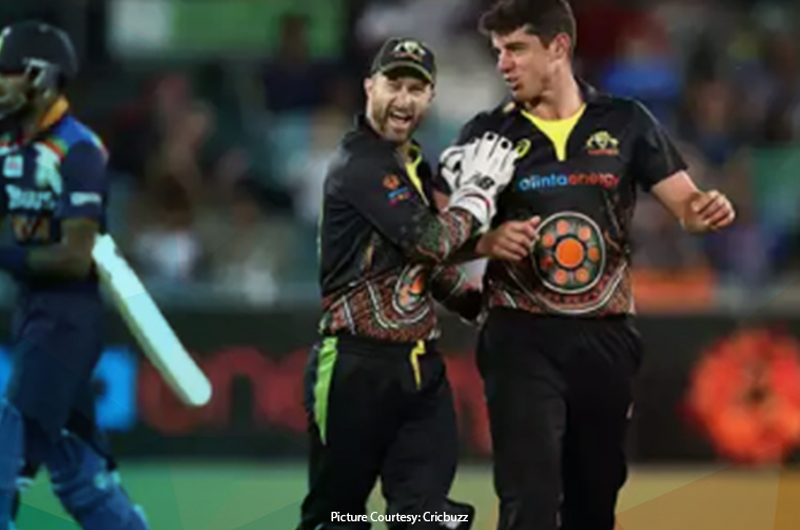As the Australian summer sets in, 04-Dec-2020 saw the first of the three T20Is between India and Australia. It was a beautiful setting at Canberra where the home team won the toss and elected to field. The Aussies had great form coming into this T20I, winning all of their T20Is at home in the shortened calendar year of 2020. The Blues were sitting third in the ICC T20I ranking behind the Aussies (2nd) and were about to play a series of great importance to both - rankings as well as the upcoming T20I world cup in India in the latter half of 2021.
Both teams were trying to give new players a shot in this series with their sights firmly set on the World Cup. The Indians handed the yorker specialist from Tamil Nadu, T Natarajan, his first cap after his impressive performances in the IPL. The opposition camp was missing the lights of David Warner and Marcus Stoinis – two of the most premier names in T20 cricket and brought in Mitchell Swepson after his eye-catching performance in the BBL 2019.
Swepson had impressive stats in BBL 2019 which is shown below :

T Natarajan IPL 2020 stats :

First Innings
KL Rahul and Shikhar Dhawan walked out to open the innings for India. Both KL and Shikhar were coming off the back of incredible individual IPL 2020 season. But Mitchell Starc bowled an absolute beauty to knock Shikhar Dhawan’s off stump in the third over. This was followed by the quick dismissal of the Indian captain, Virat Kohli, who gave his wicket away cheaply to Australian leggie, Mitchell Swepson. Sanju Samson played a quick fire 23(15) and Manish Pandey got out for just 2(8). While all this was happening on the other end of the pitch, KL Rahul scored a smashing 51(40), showing his class and credentials against one of the best bowling attacks in T20I cricket.

India were struggling at 114-6 from 16.5 overs with Ravindra Jadeja and young Washington Sundar at the pitch. The next 3 overs saw a run fest with Jadeja scoring 34 runs off 14 balls. But the event that caught the eye and which would eventually lead to the use of a concussion sub occurred during the same period when Ravindra Jadeja was hit on the helmet from a Mitchell Starc ball in the final over of the first innings.
India ended their batting with a respectable total of 161-7 on a ground where the average score batting first was 150. Moises Henriques impressed with the ball picking up 3 wickets for 22 runs.

Innings Break
When the Australian opening batsmen were ready to walk out, the match referee – David Boon, was in conversation with an irritated Justin Langer and Aaron Finch. This was possibly the moment when the Australian camp was informed about India’s use of a concussion sub, bringing in Yuzvendra Chahal for Ravindra Jadeja.
Chahal was not part of India’s playing XI and bringing a premier leg spinner who was known for his wicket-taking prowess looked sketchy. The frustrations of the Australian camp were understandable as the events played out in such a way where an extra batsman played when the team were batting and a well-renowned wicket taker played in the second innings.
Second Innings
Australia had an amazing start to the second innings scoring 53 runs in 6 overs with no wickets lost. The tale took its twist when Chahal, the concussion sub who was allowed to bowl his full quota of 4 overs as per the rules, was introduced into the attack. He dismissed Aaron Finch and Steve Smith, arguably the two best batsmen in the Australian line-up. The rest of the Australian batsmen struggled to put runs on the board and in the end, Australia fell short by 11 runs. Chahal ended the match with figures of 3-25 from 4 overs which would see him win Man of the Match. The report below shows the list of players who made a substitute appearance and won man of the match award by doing so.

Key Takeaway :
The events that played out in the first T20I highlighted the grey area of the rules. Although a concussion sub is a necessary and valuable addition to the game of cricket, there could be better and elaborate definitions for the replacement that could be named in place of the injured player. Although the result may not be of great significance in the grand scheme of things, a closer review of the rules surrounding the concussion sub has proved to be quite necessary.


